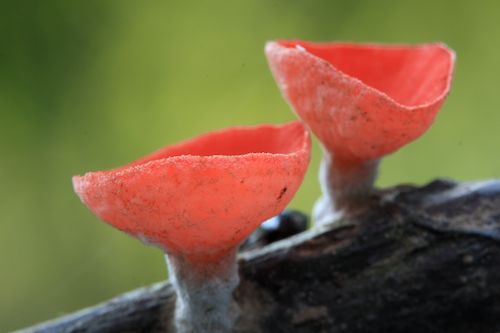Crow’s Nest: On my night table…
I have been reading David George Haskell’s The Forest Unseen: A Year’s Watch in Nature. Each chapter is a different day’s observation in a small circle inside a patch of old-growth woods. He also writes a blog, Ramble, that also contains his observations, many of which are made through a hand lens, and which link the very small with the big picture of cycles, rhythms, the web of life, and evolution. (Below, some scarlet cup fungus photographed at Crow’s Nest this summer.)

Want to know about fern spores, or Bergmann’s rule (the relationship of animal size and rates of heat loss, reflected in geographic trends in body size)? Or the ecosystem of a deer’s rumen, which allows these animals to make use of the vast stores of energy locked up in plant tissues? Or how maples can leaf out early, when hickories must leaf out late to avoid the risk of sap freezing in the xylem and damaging the cells?
Haskell traces the calcium cycle from the shells of snails, fed upon by birds, ground in their gizzards and dissolved in their blood. If not used immediately for egg shells, it is stored in the core of the bones in female’s wing and leg bones. He addresses some mysteries of the propagation of spring ephemeral wildflowers: for generations people thought the seeds were only ant-propagated but their short-distance planting couldn’t explain the flowers’ rapid range expansion.
These musings about the forest and the web of life impart some humility, as Haskell says, helping us find our way back to a moral vision of thoughtful management for both humans and forests. It’s an enjoyable read, and a useful one.
Posted by Daniel Barringer on November 23, 2012.
